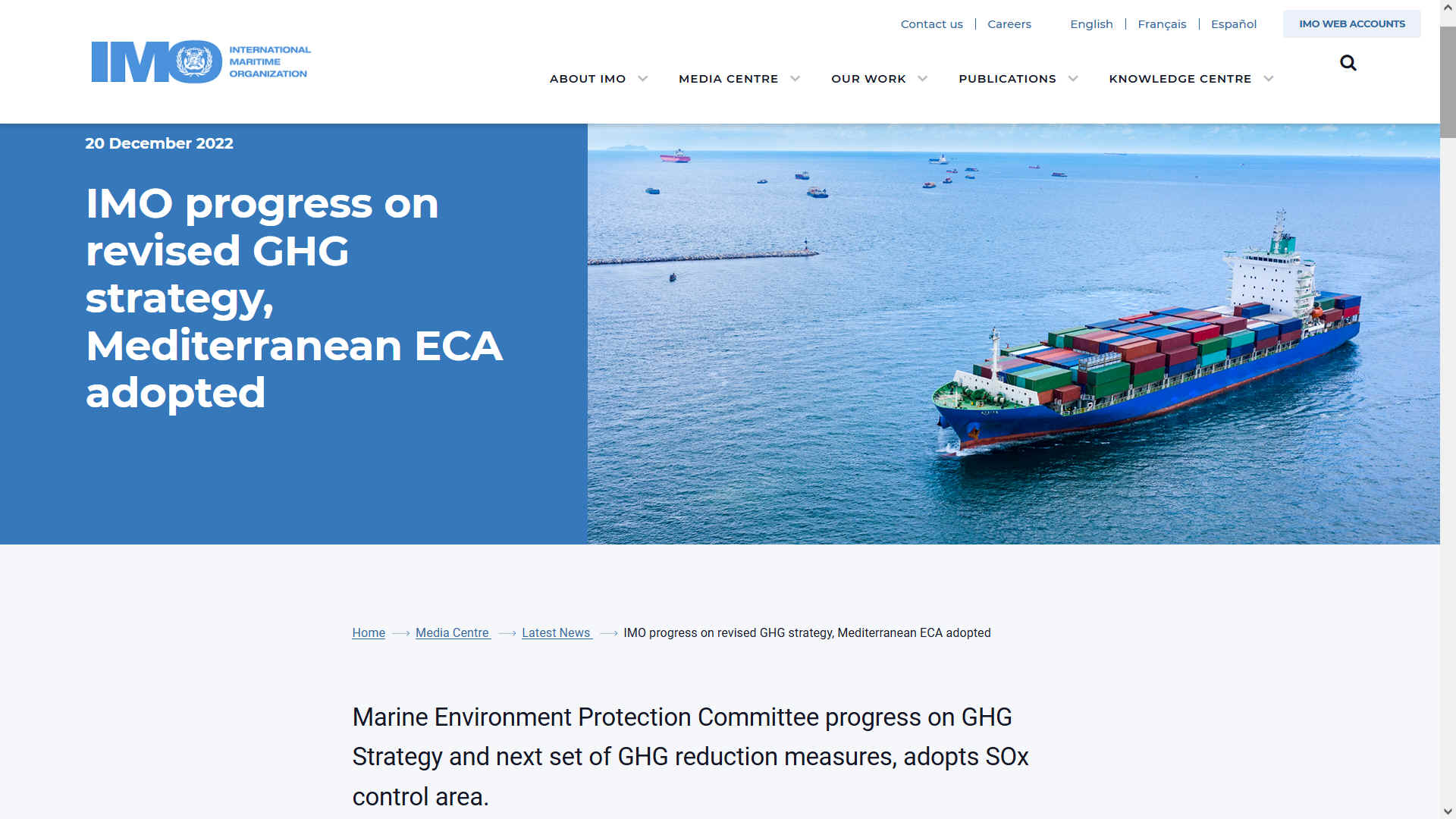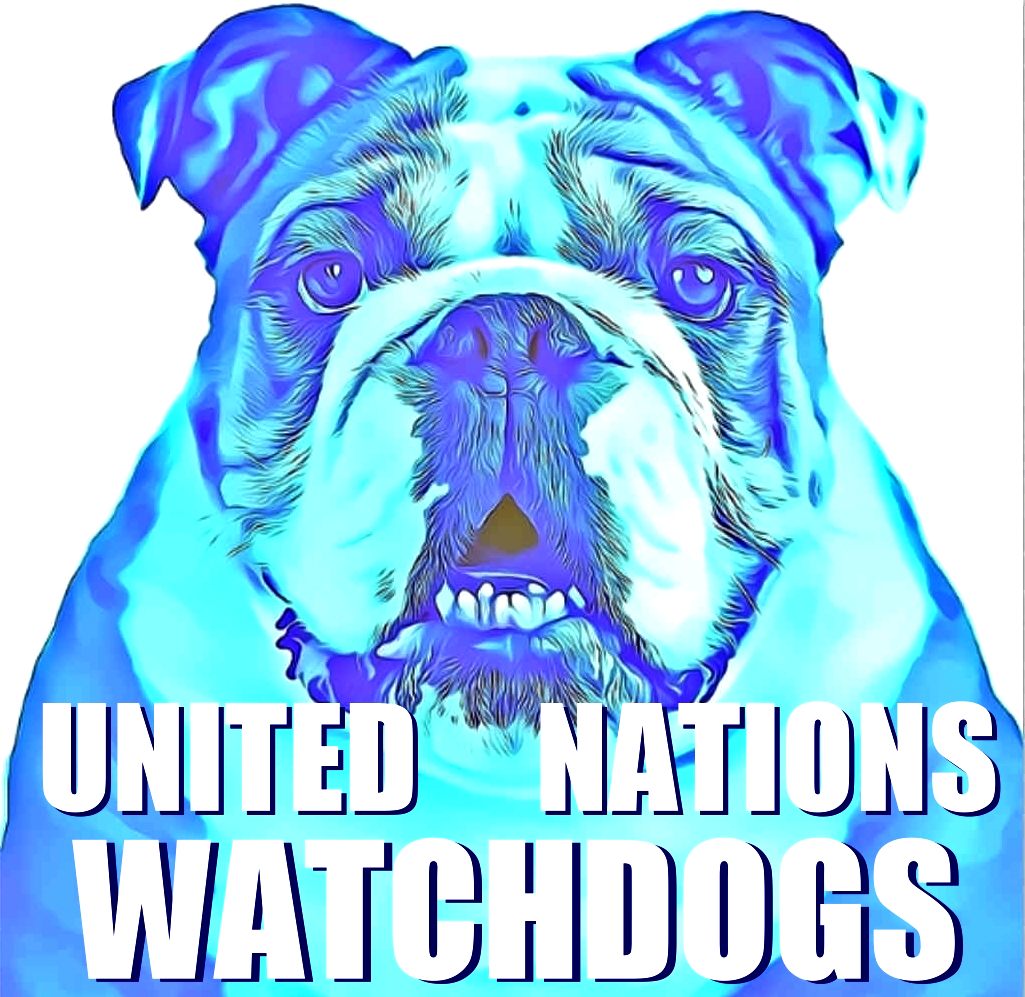|
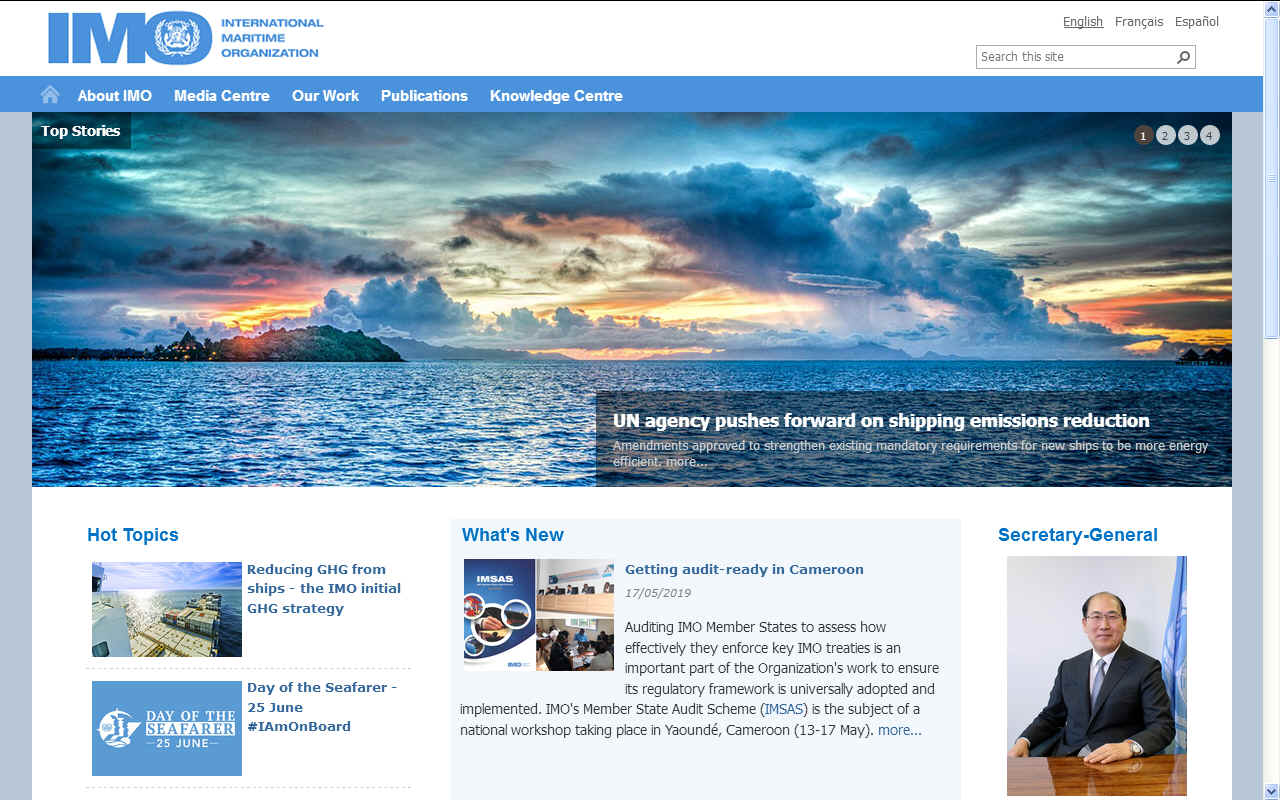
Marine litter presents a huge problem in our oceans, with some scientists warning that, by 2050, the quantity of plastics in the oceans will outweigh fish.
But IMO and others have been taking action to address the problem, including regulating the discharge of garbage from ships and supporting research work.
In 2018, IMO adopted an Action Plan to address marine plastic litter from ships and in 2021 a Strategy to address marine plastic litter from ships.
The
IMO,
indeed, no department of the United Nations, is about to engage proactively in an ocean
sweeps (drone patrols and the like), or deal with
discharges from rivers to tackle marine
pollution. Nor are they dealing with ghost fishing nets, to include
detection and prosecution of offenders. They are
though adopting a passive approach by introducing new checks and
balances concerning fishing
vessels and ship discharges.
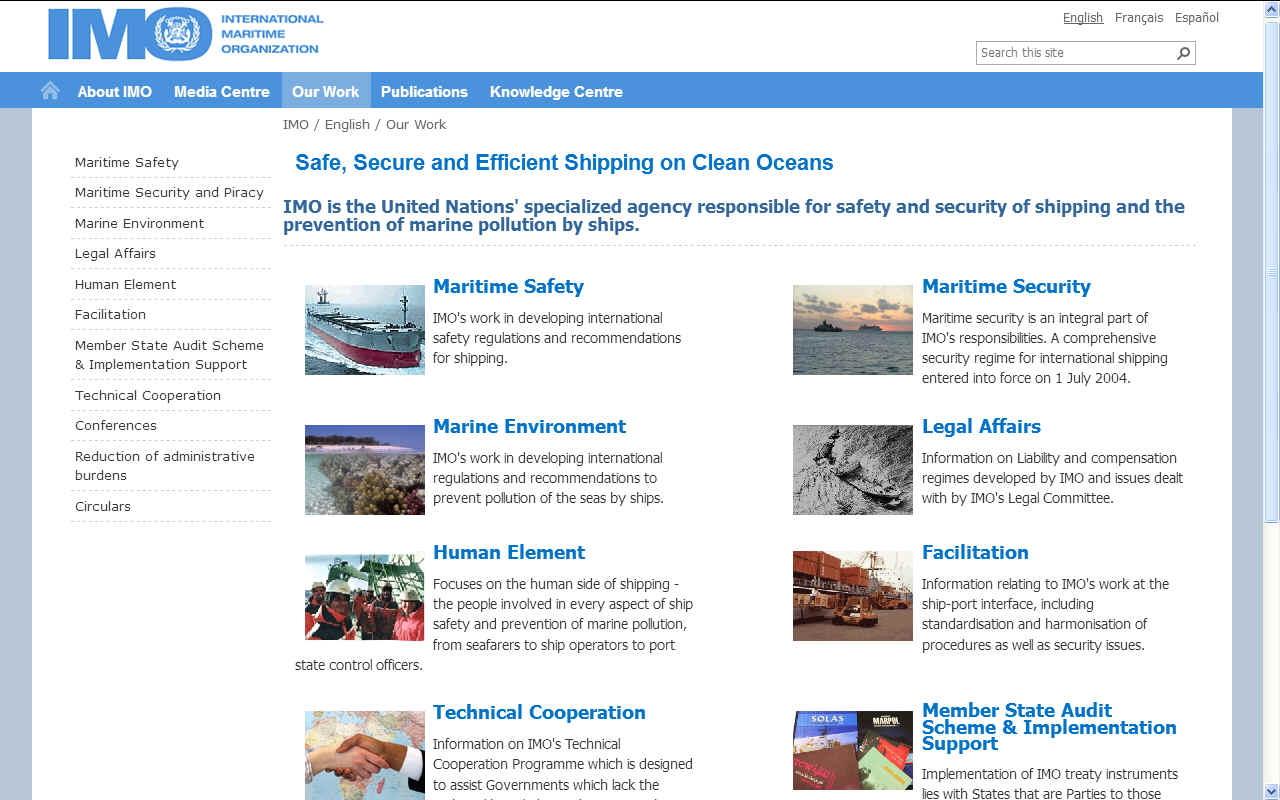
WHAT IS MARINE LITTER?
Plastic materials in all shapes and sizes are omnipresent in our seas and oceans. They break down extremely slowly in the marine environment, taking in excess of 400 years. Marine litter originates from many sources and causes a wide spectrum of environmental, economic, safety, health and cultural impacts. For example, marine litter can cause harm to sealife if ingested or even death if a marine mammal becomes entangled in litter.
Marine litter has been defined by UN Environment as “any persistent, manufactured or processed solid material discarded, disposed of or abandoned in the marine and coastal environment. Marine litter consists of items that have been made or used by people and deliberately discarded into the sea or rivers or on beaches; brought indirectly to the sea with rivers, sewage, storm water or winds; accidentally lost, including material lost at sea in bad weather (fishing gear, cargo); or deliberately left by people on beaches and shores.”)
Marine litter, including plastics and microplastics, is known to result from land-based sources in massive quantities but can also originate from ships. Debris has been observed in coastal areas, in waters far from
anthropogenic pollution sources, in surface waters, in the water column of deep water and in ocean sediments, and from the equator to the poles, including trapped in sea ice.
UN Environment estimates that 15% of marine litter floats on the sea's surface, 15% remains in the water column and 70% rests on the seabed.
According to another study, 5.25 million plastic particles, weighing 268,940 tonnes in total, are currently floating in the world's oceans.
WHAT PROBLEMS DOES MARINE LITTER CAUSE?
In addition to the environmental and health problems posed by marine litter, floating garbage and plastics pose a costly as well as dangerous problem for shipping, as they can be a navigational hazard and become entangled in propellers and rudders.
Another problem requiring urgent remedial action is the massive accumulation of plastics, not only in coastal areas but also in the deep sea.
This litter is harmful to marine life: sea creatures can become trapped inside containers or strangled by nets or ropes, and microplastics can also enter the food chain as they are indigestible when swallowed.
MICROPLASTICS
Microplastics are tiny pieces of plastic or fibres increasingly found in the oceans. They can result from the fragmentation of larger plastic items, especially when exposed to sunlight.
They may also be purposefully manufactured for particular industrial or domestic applications. One example is in facial cleansers and body scrubs. It has been estimated that a single shower can result in 100,000 plastic particles entering the ocean.
Microplastics have been found distributed throughout the world’s oceans, on shorelines, in surface waters and seabed sediments, from the Arctic to Antarctic. They may accumulate at remote locations such as mid-ocean gyres, as well as close to population centres and shipping routes.
Fish and shellfish ingest microplastics and they have been found in a variety of commercial fish and shellfish in retail outlets. Further research is needed in order to determine how and if microplastics pose a risk for food safety and potentially food security.
The good news is that several governments have announced plans to ban microbeads in cleaning products and cosmetics, such as exfoliating facial and body scrubs, and a number of cosmetic companies have already made voluntary commitments to phase them out by 2020.
Microplastics have come to the attention of the Joint Group of Experts on Scientific Aspects of Marine Environmental Protection (GESAMP), which is an advisory body of the United Nations, for which IMO fulfils Secretariat functions.
The GESAMP working group on microplastics has produced two reports. The second microplastics report, published in January 2017, investigates the sources and fate and potential ecological impacts of microplastics and gives recommendations for further work.
WHAT HAS THE IMO DONE TO REGULATE MARINE LITTER?
IMO pioneered the prohibition of plastics’ disposal from ships anywhere at sea almost 30 years ago.
MARPOL Annex V prohibits the discharge of all types of garbage into the sea from ships, except in the cases explicitly permitted under the Annex (such as food waste, cargo residues, cleaning agents/additives that are not harmful to the marine environment).
Garbage includes all kinds of food, domestic and operational waste, all plastics, cargo residues, incinerator ashes, cooking oil, fishing gear, and animal carcasses generated during the normal operation of the ship and liable to be disposed of continuously or periodically.
MARPOL Annex V applies to all ships, which means all vessels of any type whatsoever operating in the marine environment.
MARPOL Annex V recognizes that some sea areas require higher degrees of protection and can be designated as Special Areas under MARPOL.
Currently, there are eight Special Areas designated under Annex V: the Mediterranean Sea, the Baltic Sea, the Black Sea, the Red Sea, the "Gulfs" areas, the North Sea, the Wider Caribbean region including the
Gulf of Mexico and the
Caribbean
Sea, and the Antarctic area.
All of these have entered into effect, except the Black Sea and the Red Sea (due to no receipt of sufficient notifications on adequate reception facilities).
There is a complete prohibition on plastics, domestic wastes, cooking oil, incinerator ashes, operational wastes and fishing gear. For other types of garbage, such as food wastes, there are specific rules on when and where they can be discharged.
AVOIDING SINGLE USE PLASTIC
Guidelines adopted by IMO recommend that "all shipowners and operators should minimize taking on board material that could become garbage". Specifically, the guidelines recommend that shipowners and operators, where possible with the ships suppliers, should consider the products being procured in terms of the garbage they will generate. Options include:
- using supplies that come in bulk packaging, taking into account factors such as adequate shelf-life (once a container is open) to avoid increasing garbage associated with such products;
- using supplies that come in reusable or recyclable packaging and containers;
- avoiding the use of disposable cups, utensils, dishes, towels and rags and other convenience items whenever possible; and
- avoiding supplies that are packaged in plastic, unless a reusable or recyclable plastic is used.
The guidelines recommend that manufacturers, cargo owners, ports and terminals, shipowners and operators and governments consider the management of garbage associated with ships' supplies, provisions, and cargoes as needed to minimize the generation of garbage in all forms.
DUMPING OF WASTES AT SEA
The dumping of wastes at sea is regulated by the 1972 Convention on the Prevention of Marine Pollution by Dumping of Wastes and Other Matter, commonly called the London Convention, and its 1996 Protocol. Under the 1996 Protocol, it is prohibited to dump wastes at sea from ships or aircraft, except for those on a permitted list, for which a special permit may be sought, and only as after a careful assessment of other disposal options and potential impacts.
The list of possibly allowed wastes includes dredged material, sewage sludge, fishing wastes, inert inorganic geological material, organic material of natural origin and carbon dioxide streams from carbon capture and storage projects. Any such waste must be thoroughly assessed before a permit is given.
IMO performs the Secretariat functions for the London Convention and Protocol.
THE HONG KONG CONVENTION - RECYCLING OF SHIPS
When a ship itself reaches its end of life, almost every part of a ship can be recycled - steel, machinery, equipment, fittings and furniture. Virtually nothing goes to waste and the materials and equipment are almost entirely reused and recycled. Moreover, ship recycling provides direct and secondary employment for thousands of workers, both in the industry itself and in the ancillary markets for materials and components, particularly in the five countries where most of the world’s ship recycling is carried out today – Bangladesh, China, India, Pakistan and Turkey.
IMO has embraced the regulation of ship recycling - not only for ships, but also for land-based recycling facilities - into a single, comprehensive instrument. The International Convention on the Safe and Environmentally Sound Recycling of Ships, the so-called Hong Kong Convention, was adopted in 2009.
The Convention embraces the “cradle to grave” concept for the purpose of addressing all environmental and safety aspects relating to ship recycling, taking them into account from the ship design stage onwards and right through to the end of the ship’s life, and including also the responsible management and disposal of associated waste streams in a safe and environmentally sound manner.
When the Hong Kong Convention enters into force, it will provide inclusive and effective standards that can be applied universally. It places responsibilities and obligations on all parties concerned - shipowners, ship building yards, ship recycling facilities, flag States, port States, recycling States, etc. The Convention, the first ever to address ship recycling issues, is aimed at ensuring that ships, when being recycled after reaching the end of their operational lives, do not pose any unnecessary risk to human health and safety or to the environment.
IMO is currently raising awareness of the Convention internationally and in particular is working with recycling countries, to help build the capacity and establish the conditions that will enable them to ratify/accede to the Hong Kong Convention.
|
|
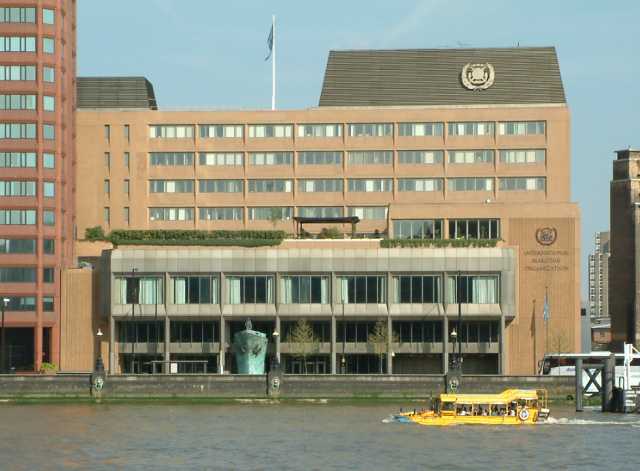
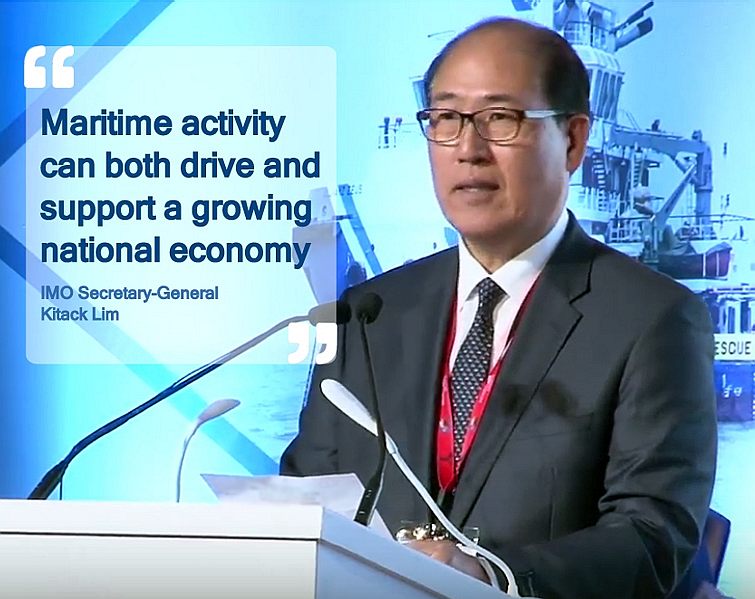
The
IMO's headquarters in London, on the banks of the river
Thames & Kitack Lim, Secretary General
IMO STRATEGY TO ADDRESS MARINE PLASTIC FROM SHIPS - ZERO PLASTIC WASTE
DISCHARGES TO SEA BY 2025
IMO’s Marine Environment Protection Committee (MEPC) in 2021 adopted its Strategy to address marine plastic litter from ships, which sets out the ambitions to reduce marine plastic litter generated from, and retrieved by, fishing vessels; reduce shipping's contribution to marine plastic litter; and improve the effectiveness of port reception and facilities and treatment in reducing marine plastic litter.
The Strategy sets a vision to "strengthen the international framework and compliance with the relevant IMO instruments, endeavouring to achieve zero plastic waste discharges to sea from ships by 2025".
The Strategy also aims to achieve further outcomes, including: enhanced public awareness, education and seafarer training; improved understanding of the contribution of ships to marine plastic litter; improved understanding of the regulatory framework associated with marine plastic litter from ships; strengthened international cooperation; and targeted technical cooperation and capacity-building.
The adoption of the Strategy follows the adoption, in 2018, of the IMO Action Plan to address marine litter alongside actions to be completed by 2025, which relate to all ships, including fishing vessels.
The Strategy and action plan supports IMO’s commitment to meeting the targets set in the UN 2030 Sustainable Development Goal 14 (SDG 14) on the oceans.
The Action Plan notes that marine plastic litter enters the marine environment as a result of a wide range of land- and sea-based activities. Both macroplastics (for example, large plastic items such as plastic bags, water bottles and fishing gear) and microplastics (small plastic particles generally five millimetres or less in size) persist in the marine environment and result in harmful effects on marine life and biodiversity, as well as negative impacts on human health. In addition, marine plastic litter negatively impacts on activities such as tourism, fisheries and shipping. This plastic material has the potential to be brought back into the economy by means of reuse or recycling. Studies demonstrate that despite the existing regulatory framework to prevent marine plastic litter from ships, discharges into the sea continue to occur.
The Action Plan provides IMO with a mechanism to identify specific outcomes, and actions to achieve these outcomes, in a way that is meaningful and measureable. The plan builds on existing policy and regulatory frameworks, and identifies opportunities to enhance these frameworks and introduce new supporting measures to address the issue of marine plastic litter from ships.
SPECIFIC
IDENTIFIED MEASURES INCLUDE:
- a proposed study on marine plastic litter from ships;
- looking into the availability and adequacy of port reception facilities;
- consideration of making marking of fishing gear mandatory, in cooperation with the Food and Agriculture Organization (FAO);
- promoting reporting the loss of fishing gear;
- facilitating the delivery of retrieved fishing gear to shore facilities;
- reviewing provisions related to the training of fishing vessel personnel and familiarization of seafarers to ensure awareness of the impact of marine plastic litter;
- consideration of the establishment of a compulsory mechanism to declare loss of containers at sea and identify number of losses
- enhancing public awareness; and
- strengthening international cooperation, in particular FAO and UN Environment.
IMO will continue to work with UN partners, including, the Food and Agriculture Organization (FAO), through the Joint FAO/IMO Ad Hoc Working Group on illegal, unregulated and unreported (IUU) Fishing and Related Matters; the Joint Group of Experts on the Scientific Aspects of Marine Environmental Protection (GESAMP); the UN Environment-managed Global Partnership on Marine Litter (GPML); the
United Nations Open-ended Informal Consultative Process on Oceans and the Law of the Sea (ICP); and the United Nations Environment Assembly (UNEA).
|




